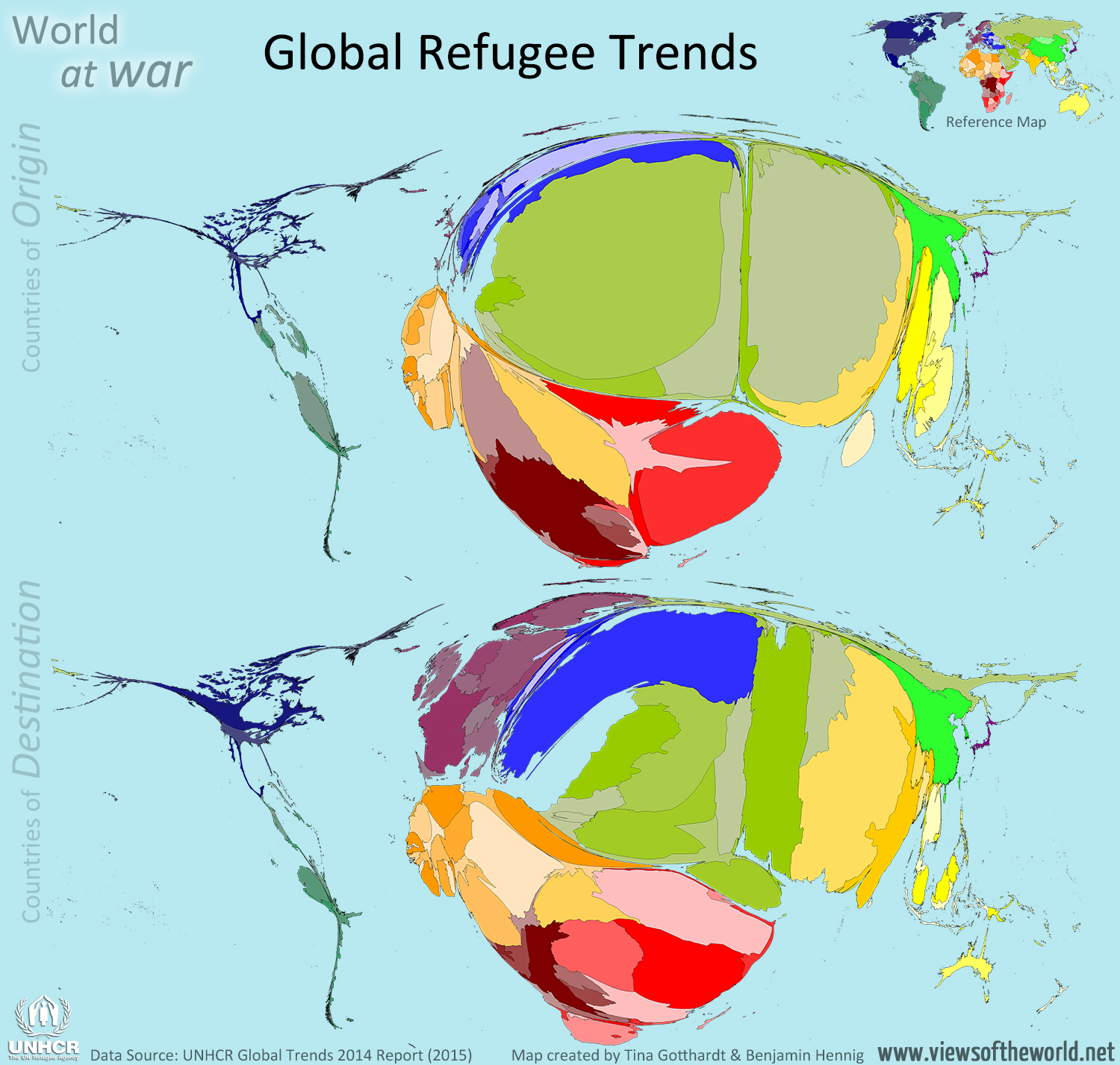1,321,560 persons have applied for asylum in the European Union in 2015 according to Eurostat. Eurostat defines an asylum applicant as “a person having submitted an application for international protection or having been included in such application as a family member during the reference period”. This is not the number of granted asylum claims, neither does it mean that this is a figure for first-time applicants but includes all claims having been made in that year.
The spatial patterns for these figures are very different than those arriving as refugees on the shores of the Mediterranean (see here for 2015), as are the number of asylum claims in the past year. The following two cartograms put these figures into their spatial context by providing two different ways of interpreting the data. The first map is a cartogram where countries of the European Union are resized according to the total number of asylum applicants in the past year (all countries having more than 50,000 applications are labelled in that map). The second map shows this in relative proportions drawn on a population cartogram. Here the basemap shows the EU countries resized according to their total population, i.e. providing an impression of each country’s population share, and indicates the relative number of asylum seekers measured in asylum applications per 1 million population:
The emerging pictures varies in some cases because not every country receives an equal share of asylum applications. In absolute numbers, Germany is by far the most sought after destination, with 476,510 asylum applications having been made there in 2015. This is followed by Hungary (177,135) and Sweden (162,450). In relative terms, however, Hungary (with almost 18,000 applications per 1 million population) and Sweden (approximately 16,700 applications per 1 million population) take the largest relative share when compared to their own population. This is followed by Austria (approx. 10,300) and then by Germany (approx. 5,900 which is about a third of the relative share that Hungary received).
The two maps also reveal the gap between political (but also medial) rhetoric and the existing realities in the light of the current refugee crisis. Adding a third map to these two and the whole extent of the refugee debate from a European perspective can be better understood:
The global picture, however, puts this into a real perspective. These two cartograms show figures released by UNHCR last year in their annual review of global refugee trends. The real extent of a refugee crisis lies elsewhere. Whether simply shutting the borders of the wealthy world will solve this remains questionable.
Technical note: Two of the above maps are using a colour scheme developed for the Social Atlas of Europe. Each country shown has a unique colour which allows it to be identified in the differently distorted maps. Furthermore, all countries in these maps are shaded using a rainbow colour scheme, starting with shades of dark red to demarcate the countries with the most recent association with the EU and moving through to a shade of violet for the founding member states. The colour scheme for the world maps is explained here.
The content on this page has been created by Benjamin Hennig using data by EUROSTAT and UNHCR. Please contact me for further details on the terms of use.




Pingback: Map of the day: Europe’s asylum-seeking arrivals | eats shoots 'n leaves